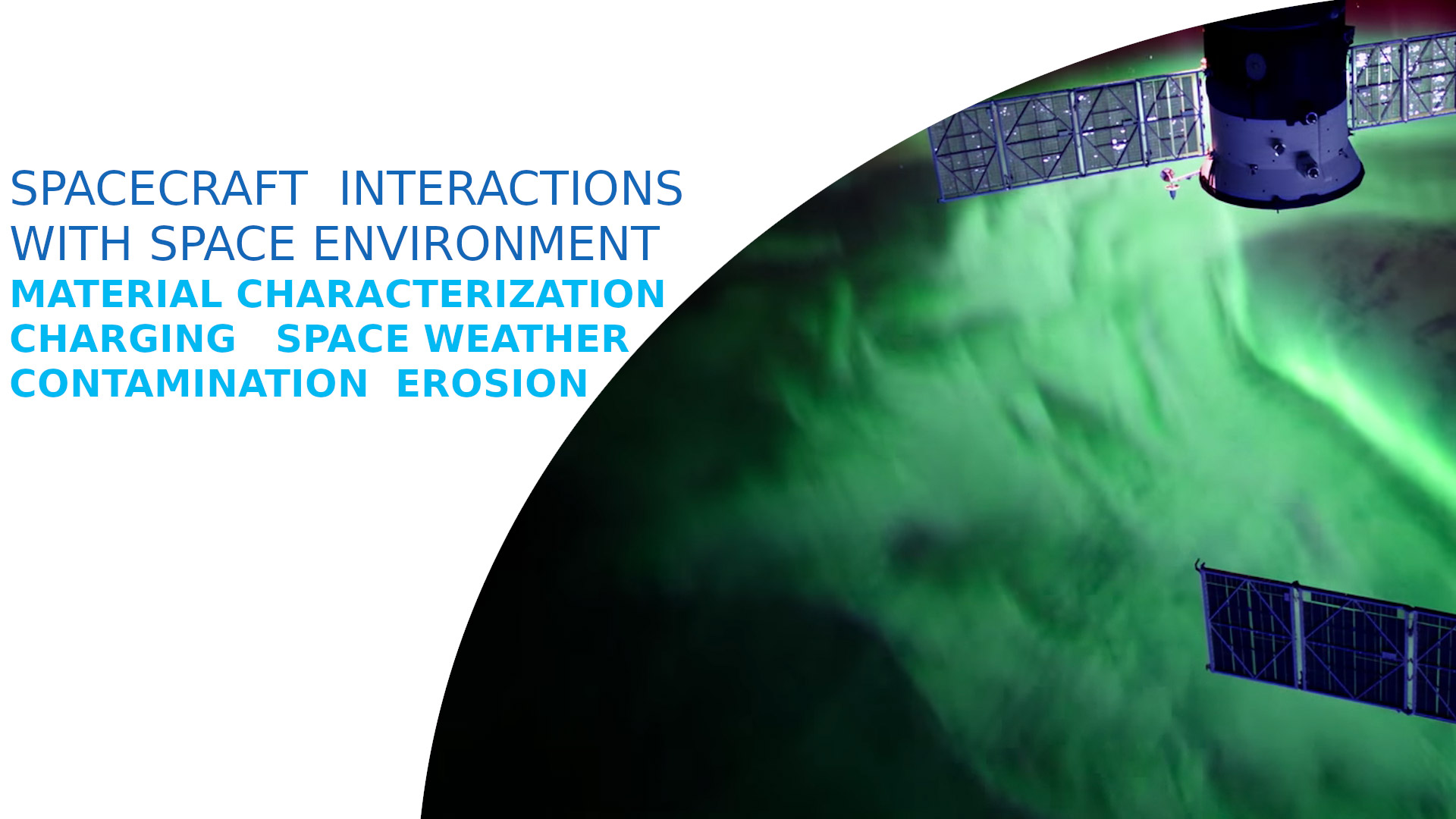
Material Characterisation & Functionalization
Electron emission and Surface State
Characterization of the emission of electrons under impact of energetic electrons, ions and photons.
Control of the emission yield through control of the surface state.
Conductivity
Characterization of the bulk and surface conductivity of materials used in space industry.
Effect of temperature, charging and radiation induced conductivity.
Erosion and contamination
Characterization of the outgassing and redeposition of contaminant from space materials.
Characterization of the erosion rate of materials under impact of heavy ions.
Material Database
Database of characteristics of material interactions with the space enviroment.
Spacecraft Charging & Active Systems
For spacecraft manufacturers
Charging
Absolute and differential charging based on plasma environment and material interactions
(secondary emission under electrons and ions impact, photo-emission, environment-varying conductivity,...)
Electric Propulsion
Modelling of Hall and ion-grid thrusters, with dedicated models for the electron plume.
Models for FEEPs and colloid thrusters including droplet transport and deposit.
Multipactor in RF components
Models and chacterization of the multipactor effect.
Surface-Plasma interactions et instrumentation
For scientific missions and laboratory experiments
Extremely low noise kinetic simulations
Kinetic simulation of the spacecraft and sub-systems with a relative noise <10-4.
Instrumentation simulation
Numerical twin of scientific instrumentation onboard spacecraft and in vacuum chambers.
For instrument design, operational exploitation and later data processing.
Facility and Experiment numerical twins
Dedicated algorithms to simulate the plasma, material and instrument behaviors in vacuum chambers.
For instrument design, operational exploitation and later data processing.
Space Physics, Space Weather and Environment Specification
Dusty environment, Lunar and Astroid's surfaces
Characterization of the regolith and dusty surfaces electrostatic characteristics and risks for the system.
Modeling and characterization of the dust transport and adhesion to lander or equipement surfaces
Charging Environment and Electrostatic Risks
Characterization of the charging enviroments and determination of the charging risks.
Environmental Charging for Solar System Exploration
Characterization of the erosion rate of materials under impact of heavy ions.
